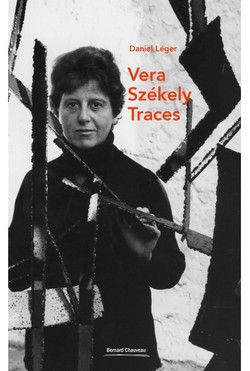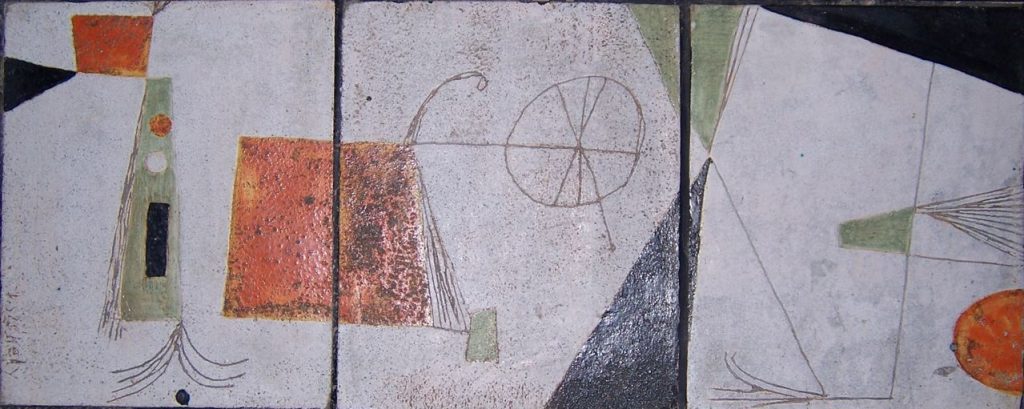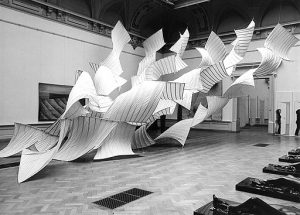“The more I advance in the writing of my encounters with Vera's work, the more I have the feeling that the angel has never really moved away from her. »
Daniel Leger, Vera Székely Traces, Bernard Chauveau Publishing, 2016, 176 pages
 Daniel Léger and his wife are art lovers. One day, at a sale, they fall in love with a ceramic table whose signature they will only discover later: Vera Székely. Their purchase, which intrigues them and fills them at the same time, will be the beginning of a story marked by the meeting with this artist of whom they knew nothing. The meeting will be unique, because Vera dies three years later, but their life will be magnetized. This book is the diary of an investigation, in search of the traces, both ephemeral and deep, left by the artist and of a quest for the mysterious source that inspired him.
Daniel Léger and his wife are art lovers. One day, at a sale, they fall in love with a ceramic table whose signature they will only discover later: Vera Székely. Their purchase, which intrigues them and fills them at the same time, will be the beginning of a story marked by the meeting with this artist of whom they knew nothing. The meeting will be unique, because Vera dies three years later, but their life will be magnetized. This book is the diary of an investigation, in search of the traces, both ephemeral and deep, left by the artist and of a quest for the mysterious source that inspired him.
The source seems to be able to be located in Hungary, in Budapest. Vera and her husband, the sculptor Pierre Szekely, have both been there, very young, students of Hanna Dallas in the 1930s and until 1944. Graphic designer, engraver and painter, Hanna was a lively and funny young woman, intelligent and deep, and also an exceptional pedagogue. From her, they learned everything: artistic practice, of course, but much more. They considered her their Master, in the Eastern sense of the term. They were also the first readers of Talking with Angels, then still in the state of handwritten notes, of which Hanna was the voice, but not the speaker. It had indeed started with this warning to her friend Gitta Mallasz "Be careful, it's not me who's talking anymore. “Those who spoke said to themselves beyond space and time…
Daniel Léger is convinced of this, Vera Székely will be marked for life by this initiation, and her work is the expression of the inner world revealed by her Master. It draws all its strength, originality, independence and mystery from it.

In 1987, Vera explained the nature of her meeting with Hanna Dallos to Christian Dumon, with whom she was working for an exhibition: "This teaching was more of a love story than an intellectual story, and I believe that is the the most direct route (…) Spirituality is an integral part of life, it's like eating, drinking, working, taking a shower, making love, gardening, it's not separate. We have our feet on the ground and our heads in the sky. We are the link between the two. No one can be detached, dissociated from what is happening in the world. We are part of this magma: humanity. Our actions, our thoughts, what we say, what we eat, what we breathe in, what we breathe out, everything is of enormous importance. »

Vera Székely's personality made a deep impression on culture professional Christian Dumon. He remembers "the physical side of her work, her determination, the tension of her works, her rejection of softness and aesthetics, as much as her serenity and great humanity". But she had an even greater impact on her daughter Raphaëlle, who was only 5 at the time. As she wandered among the spider webs Vera had created, a gentle lightning struck her, "an immediate and reciprocal recognition. Vera opened up a river for me," she says. "Every moment with Vera was timeless, suspended from everyday life. It was my encounter with the spiritual, with limitless dimensions. What Hanna Dallos had been for her 50 years earlier, Vera Székely was in a way for Raphaëlle Dumon. Their meeting decided her vocation as an artist, but the freedom it gave her later led her to withdraw from an artistic milieu in which she was not comfortable. But she still feels fully creative now that she works with vines...
“If you harvest something, cherries, experiences, a certain knowledge of life, you have to share. This sharing is essential. » Vera Szekely
EL
